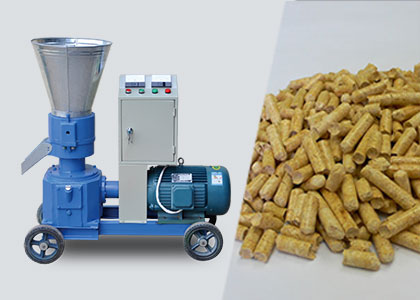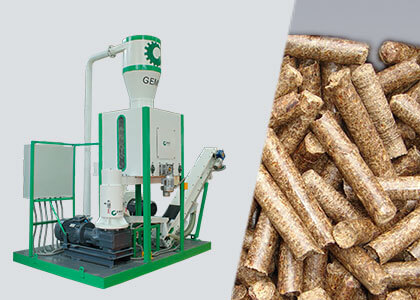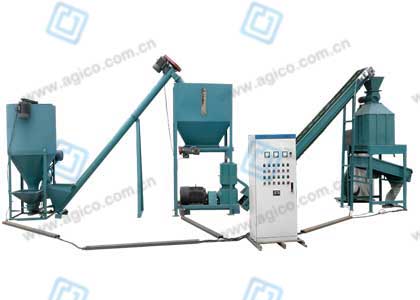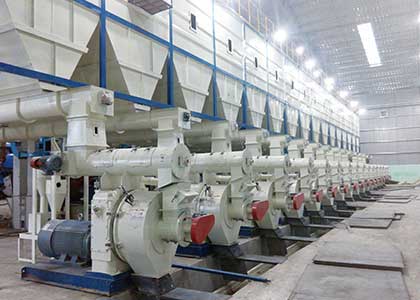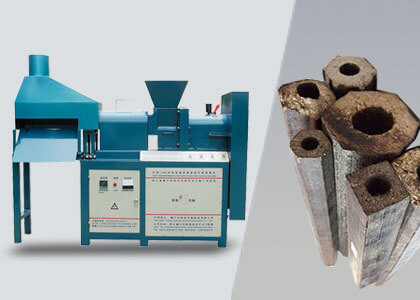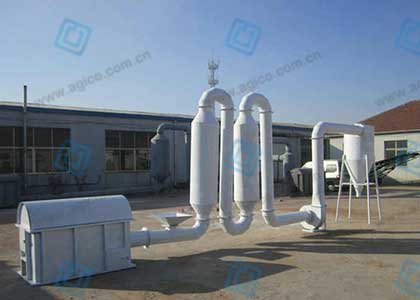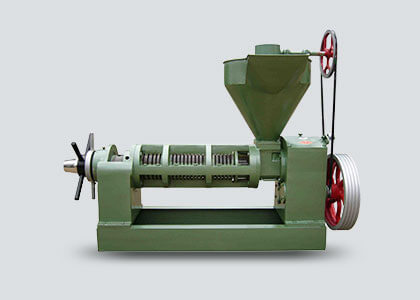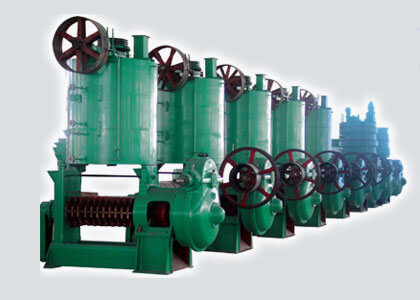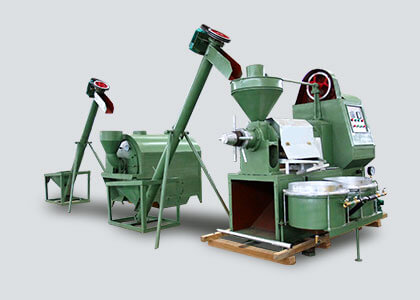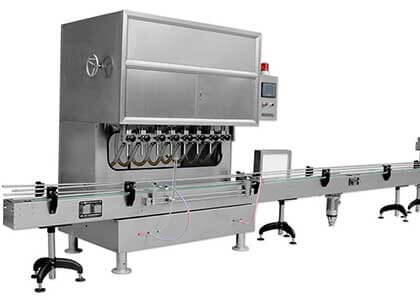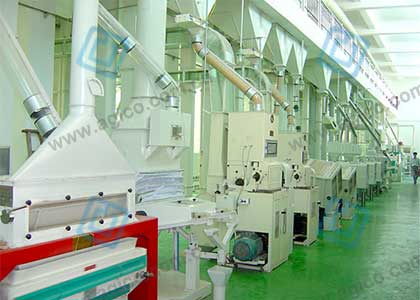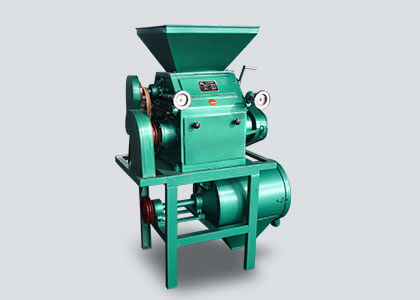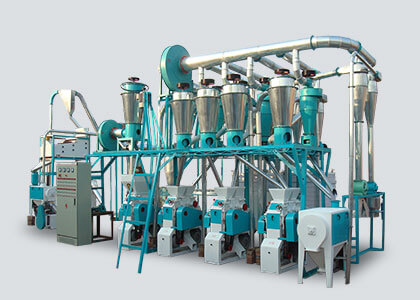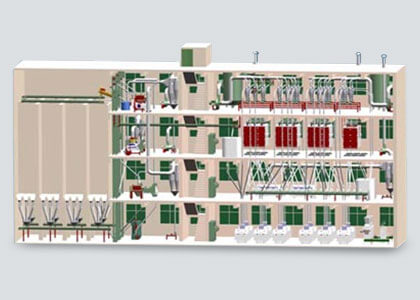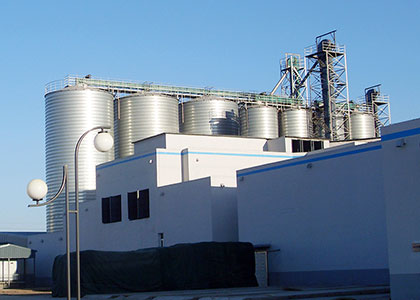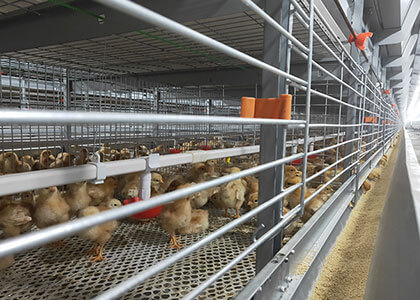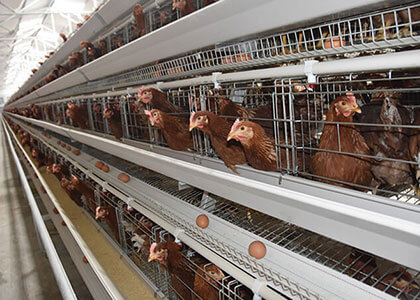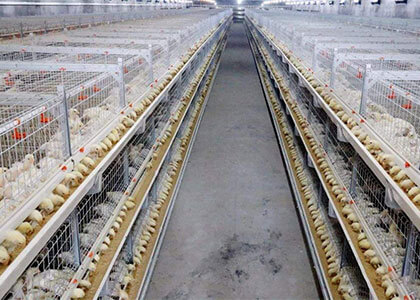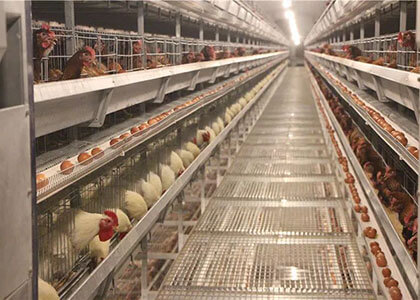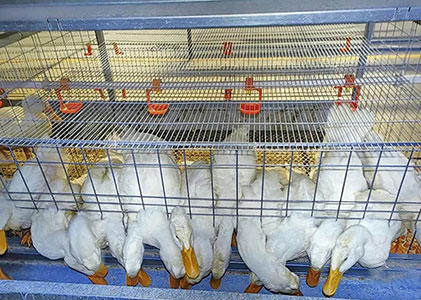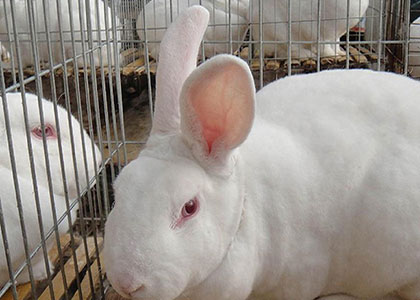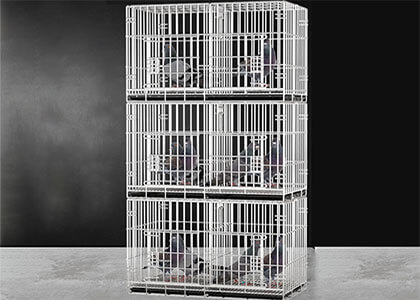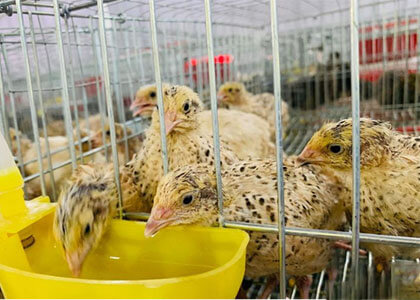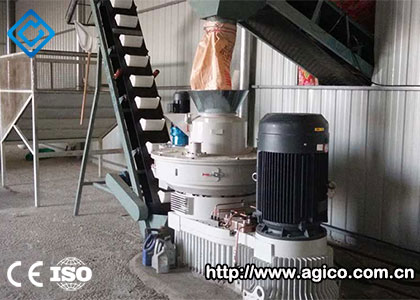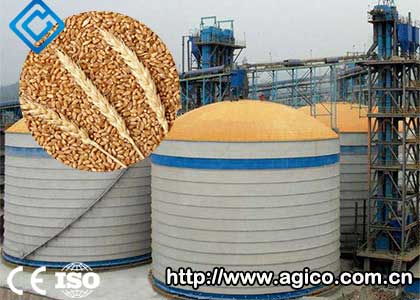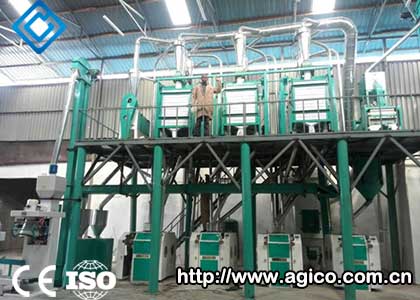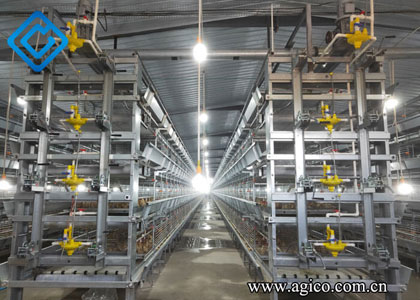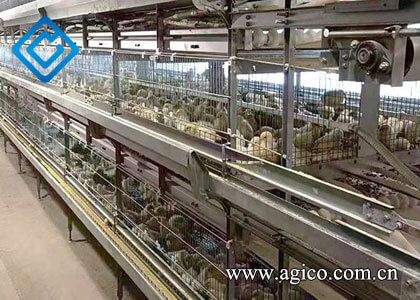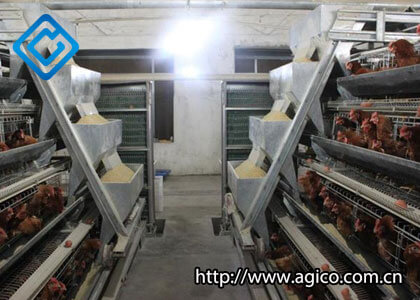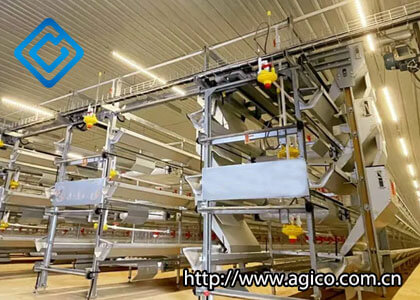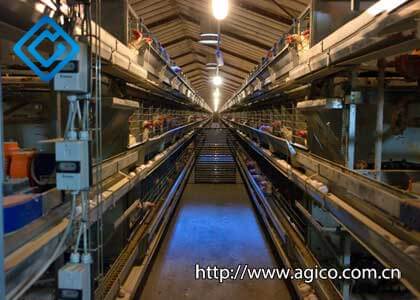Exploring Different Types of Baby Chicken Cages: Which One is Right for You?
Why do Chicks Need to be Raised in Professional Baby Chicken Cages?
Chicks need a dedicated feeding environment to ensure their healthy growth and development. Let’s explore the reasons behind the necessity of using chick cages.
In professional chicken farms, newborn chicks need to be fed in special baby chicken cage, which will be more conducive to the growth of chicks. The chick itself has the characteristics of short height, small food intake, small size, and high requirements for the environment and temperature. The baby chick cage is specially designed and manufactured for these characteristics of chicks.
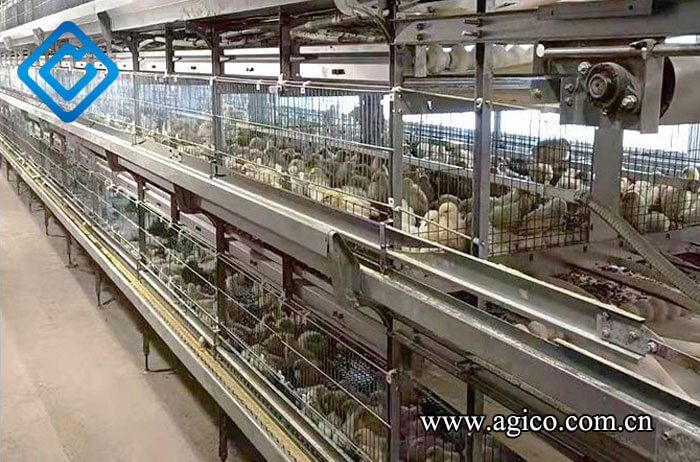
Chick cage design features
- The gap between the cage nets at the bottom is smaller, which is more suitable for the chicks to step on, and the legs of the chicks will not be stuck due to the large gaps in the cage net.
- The feeder is designed according to the appropriate amount of chicks, and the computer accurately adjusts the feeding amount.
- The height of the feeding port can be adjusted according to the growth of chicks.
- The inner edge of the trough is not blocked by beams, so the chicks can see the feed more easily and maximize the feeding width.
- There is a feed pedal on the side of the chick cage near the trough so the chicks can easily reach the feed after standing on the pedal.
As a professional poultry cage manufacturer, AGICO recommends that you choose professional baby chicken cages for chick feeding. Similarly, chicken farms that feed different types of chickens should be equipped with matching chicken cages. For example, laying hens should choose laying hen cages, and egg collectors are equipped outside the laying hen cages to facilitate the collection of eggs. Broiler cages are larger in size and more suitable for large broiler chickens.
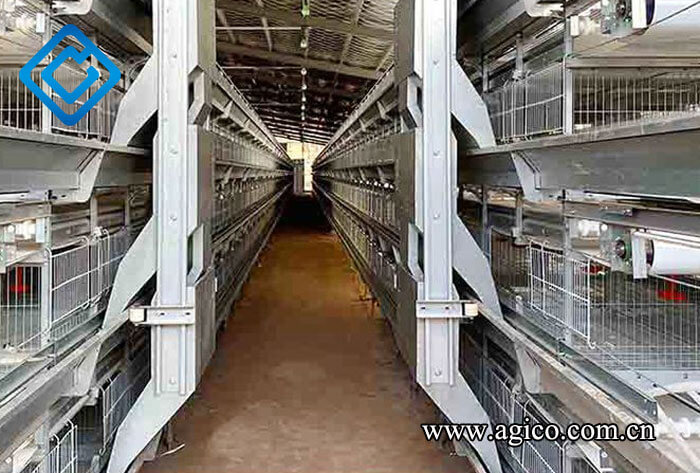
AGICO designs a variety of baby chick cages for you to choose from, which are suitable for farmers with different needs. What are the characteristics of each type of chick cage? How should we choose?
How to Choose the Right Baby Chick Cage for Your Chicken Farm?
The baby chicken cages designed by AGICO are mainly divided into H-type and A-type chicken cages. Both types of baby chicken cages have their own characteristics, and poultry breeders can choose according to their own needs.
H type Baby Chicken Cage
- Small footprint, more chicks can be reared under the same chicken house area
- The chicken house is fully enclosed and the stocking density is high
- Higher requirements for automated environmental control and daily feeding management
- Big investment
The design of the H type baby chicken cage can have better space utilization. The H-type baby chicken cage is designed with a multi-tier system, which can effectively use vertical space and can accommodate more chickens per square meter. H-shaped chick cages are designed for easy cleaning and litter removal, reducing the risk of disease transmission.
H-Type baby chicken cage specifications
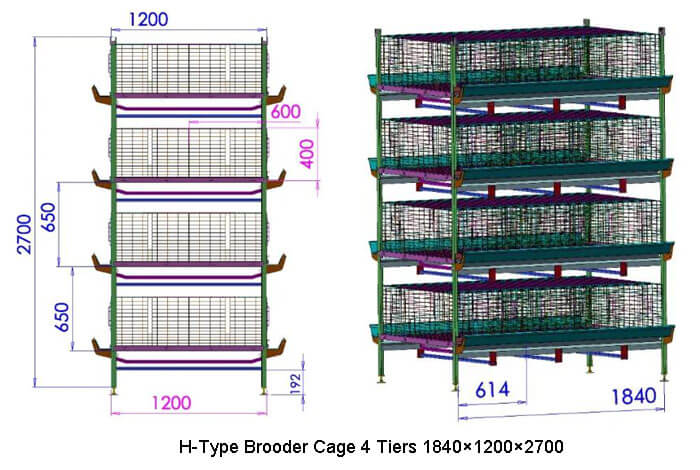
| Dimension(mm)/set | Tier | Door/tier | Bird/door | Bird/set |
|---|---|---|---|---|
| 1840×1200×2050 | 3 | 6 | 13 | 234 |
| 1840×1200×2700 | 4 | 6 | 13 | 312 |
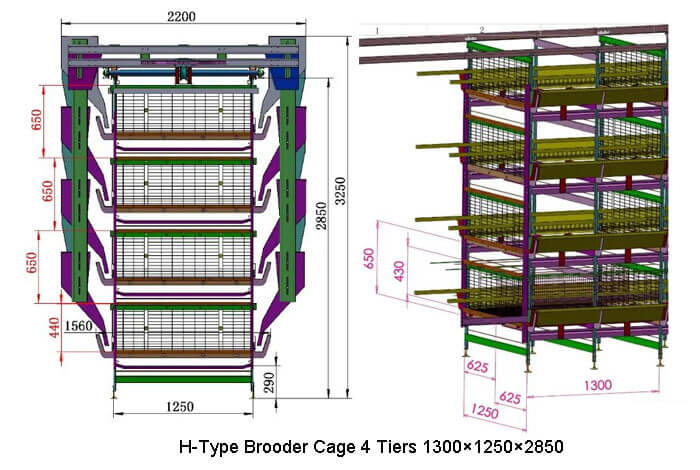
| Dimension(mm)/set | Tier | Door/tier | Bird/door | Bird/set |
|---|---|---|---|---|
| 1300×1250×2200 | 3 | 2 | 27 | 162 |
| 1300×1250×2850 | 4 | 2 | 27 | 216 |
| 1300×1250×3500 | 5 | 2 | 27 | 270 |
| 1300×1250×4150 | 6 | 2 | 27 | 324 |
| 1300×1200×2200 |
Duplex multilayer 3+3 |
2 | 27 | 162 |
The chicken house using H-type baby chicken cages adopts fully enclosed management and is equipped with new temperature control equipment. There are multiple temperature control probes in the chicken house, which can basically achieve constant temperature, and automatic management of water, feed, light, and water curtains can be realized. H-type baby chick cages support 3-6 layer configurations, and users can also choose multi-layer chicken cages to superimpose according to the height of the chicken house, such as 3+3 multi-layer configurations. H-type chicken houses are usually equipped with a standard configuration of 50,000 chickens. There are also multi-layer chick cages, and the number of chickens in a single building can reach 150,000.
A-Type Baby Chick Cage
- Chicks are kept in a low density and the open design provides better ventilation.
- lower investment cost
- Open house management requiring more frequent cleaning and management
A type baby chick cages are more affordable compared to H-type baby chick cages, making them a cost-effective option for small poultry operations. The A-type baby chick cages are designed with convenient feed and water troughs for easier management and monitoring of chicken nutrition and hydration. The open design of the A-type baby chick cages facilitates better airflow and ventilation within the cage system, reducing the risk of breathing problems for the birds. A-type baby chick cages provide more floor space for the chickens, allowing them to engage in natural behaviors such as walking, perching, and stretching.
A-Type baby chick cage specifications
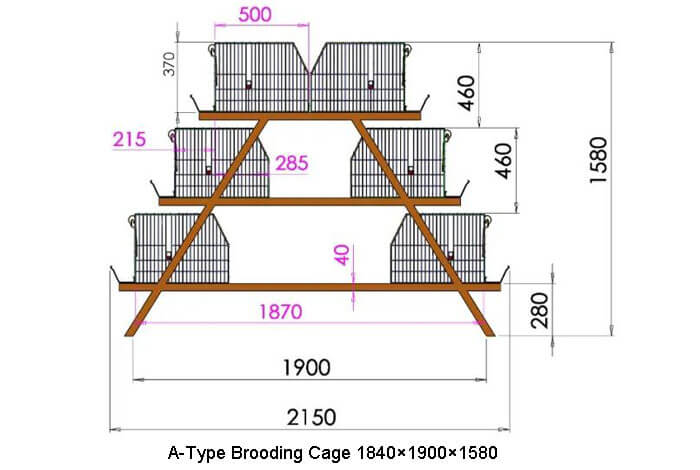
| Dimension(mm)/set | Tier | Door/tier | Bird/door | Bird/set |
|---|---|---|---|---|
| 1840×1900×1580 | 3 | 6 | 10 | 180 |
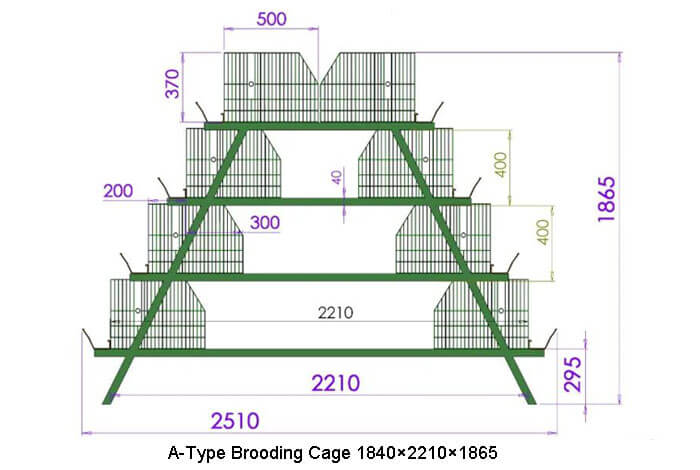
| Dimension(mm)/set | Tier | Door/tier | Bird/door | Bird/set |
|---|---|---|---|---|
| 1840×2210×1865 | 4 | 6 | 10 | 240 |
The temperature control of chicken houses using A-type baby chick cages is mostly hot water central heating system. There are boilers outside the chicken house, and temperature control probes are also installed inside the chicken house. However, because most of the boilers are coal-fired, the frequency and amount of coal addition will affect the size of the fire, thereby affecting the stability of the water temperature, so the temperature of the chicken house will not be completely constant throughout the day. The size of the chicken house with A-type baby chick cages is mostly 20,000 to 30,000 birds per house, and the chicken cage is mostly configured with 3 or 4 tiers.
It is important to note that the suitability of H-type or A-type baby chick cages may vary depending on factors such as the size of the poultry farm, management practices, and local regulations. Farmers should consider their specific needs and consult with experts to determine the best cage system for their operation. As a chick cage supplier with many years of experience, AGICO is very happy to provide you with free consulting services.

